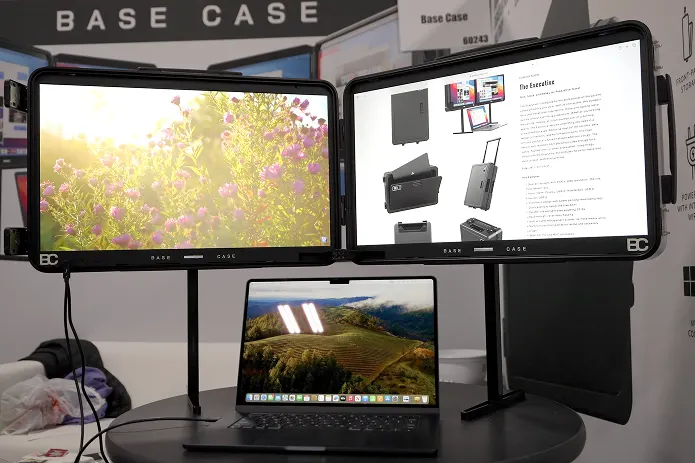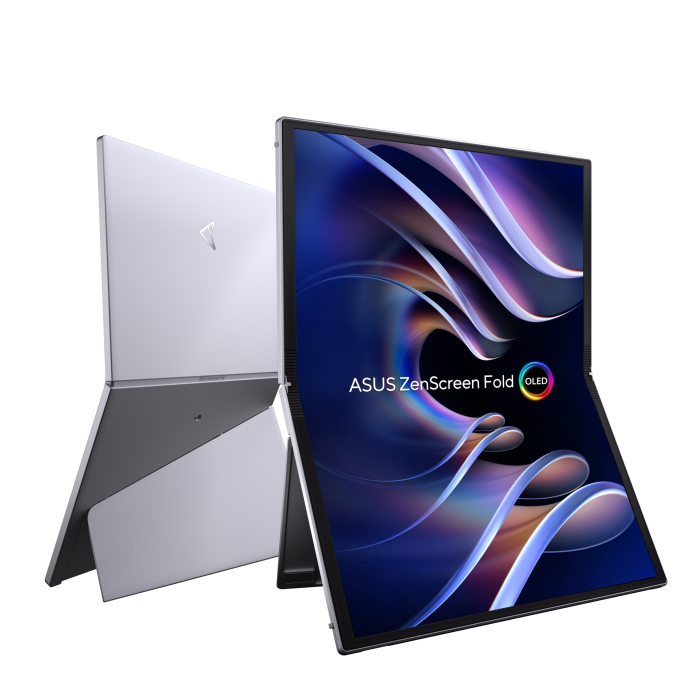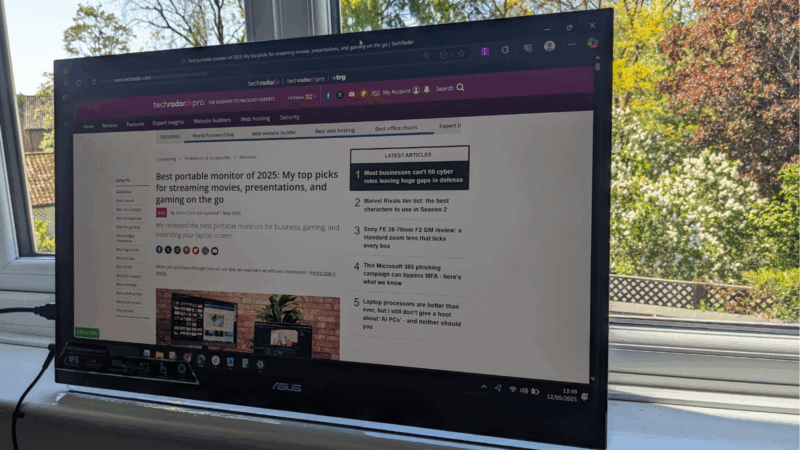Late last year, I wrote about the wave of “portable” monitors getting so large that they could easily migrate from secondary displays to being a primary one, for example, the 24in ASUS ZenScreen.
Since then, other 24in portable displays have come to market from Innoview and others. In fact, the 24” barrier has even been ever so slightly exceeded with 24.5in models from Epormot and others. Our hardware editor even recently reviewed the Asus ZenScreen MB27ACF, a 27in behemoth that’s still designed for portability.
Particularly as these products cross the 24in threshold, they invite comparison to similarly sized “desktop monitors” that sell for a fraction of their price; while these “portable” displays can cost $350 or more, several models of QHD 24in monitors with stands can be found for less than $100.
So, portable maker monitors must offer something beyond the diminishing returns of size and resolution to make the case for their products.
For example, large-screen specialist UPerfect – whose 18.5in touch display was one of the largest when I wrote about it but which now is more of a mid-tier screen size – has joined the 24in+ club.
However, it has also leveled up its assortment with a 22in touchscreen model and a massive monitor that includes two hinged 24in displays with the Delta Mega.
A two-page spread
While the 22in model’s desktop profile makes it suitable for desks at home as well as on the road, I first took it to a less conventional workspace: my piano.
For years, I’ve sought a touchscreen display that could display two sheets of sheet music side-by-side just as musicians typically use in the real world. While UPerfect’s 18.5” model could manage this, the pages were a bit small. Now, though, the larger size makes them almost as large as US Letter sheets, or at least close enough where I wouldn’t see much benefit from a larger screen that could fit on the music rack.
For this application, I’ve used an HP Chromebox because I didn’t want to have to worry about minding the battery but also wanted to access a strong library of music-related touchscreen apps.
And even though iPadOS has Android handily beaten on that front, I’ve been able to use the Chromebox-touchscreen combination to watch YouTube tutorial videos, look up chords in reference apps, and even do video chats with instructors and collaborators.
One odd element of the company’s largest touch display is that the stand does not fold completely flat behind the screen when it is fully rotated up to expose the side ports, but this hasn’t caused any issue with it lying essentially flat

There’s no hope, and likely little benefit, in getting the hinged 24” Delta Mega display to lean against a piano music rack (at least in a landscape orientation),
But the dual-screen “portable” display option packs the maximum number of screen inches into the most compact space. While it weighs in at over 11 lbs., that’s still almost half the weight of a previous attempt at a dual-24” display designed exclusively for desktops, the Mobile Pixels Geminos, which includes a weighty stand that allows for on-the-fly angle adjustment between the two displays.
Compared to most monitors, The Delta Mega’s clamshell design offers some protection to the displays while the unit is being transported. However, that’s nominal shielding compared to the Base Case, a set of side-by-side 24” monitors integrated into a rolling carry-on suitcase. Still available for preorder via Indiegogo for $2,300 for the dual-4K version, the latest update from the team in August announced the arrival of engineering samples.
For those looking for more conventional displays on the road the Skyworth 24in Portable Smart Screen is a 1080p display that has a stylish burgundy base and a thoughtfully placed handle, Google TV, and a battery that can power it for three hours.
If Google TV isn’t your preferred TV OS (for example, there’s no Spectrum TV app available on the platform), it has an HDMI and USB connection to support a streaming stick or a PC for presentations on the go.

Adding to the fold
As these hinged dual displays have shown, one way to maximize work area while minimizing a display’s size (at least using conventional displays) is to use a folding mechanism.
However, while manufacturers can bring two screens close together, it’s hard to eliminate the disruption caused by the separate screens. ASUS was the first to sell a folding standalone display although it didn’t see much distribution. Now, UPerfect has shown off the Omega, a folding display available in 17.3in and 22in sizes.
The larger variant is expected to feature 3K resolution and sell for about $2,500. While still a proof-of-concept device, the company expects to commercialize it next year.
If you can’t wait that long or want to spend that much, another option is the latest version of Arovia’s Splay Max. The portable projection display can create up to a 35” image and can also be used as a standard ultra short throw projector. It’s expected to ship in November.
For more displays, we’ve tested and reviewed the best portable monitors with 13in right up to 27in screens.








